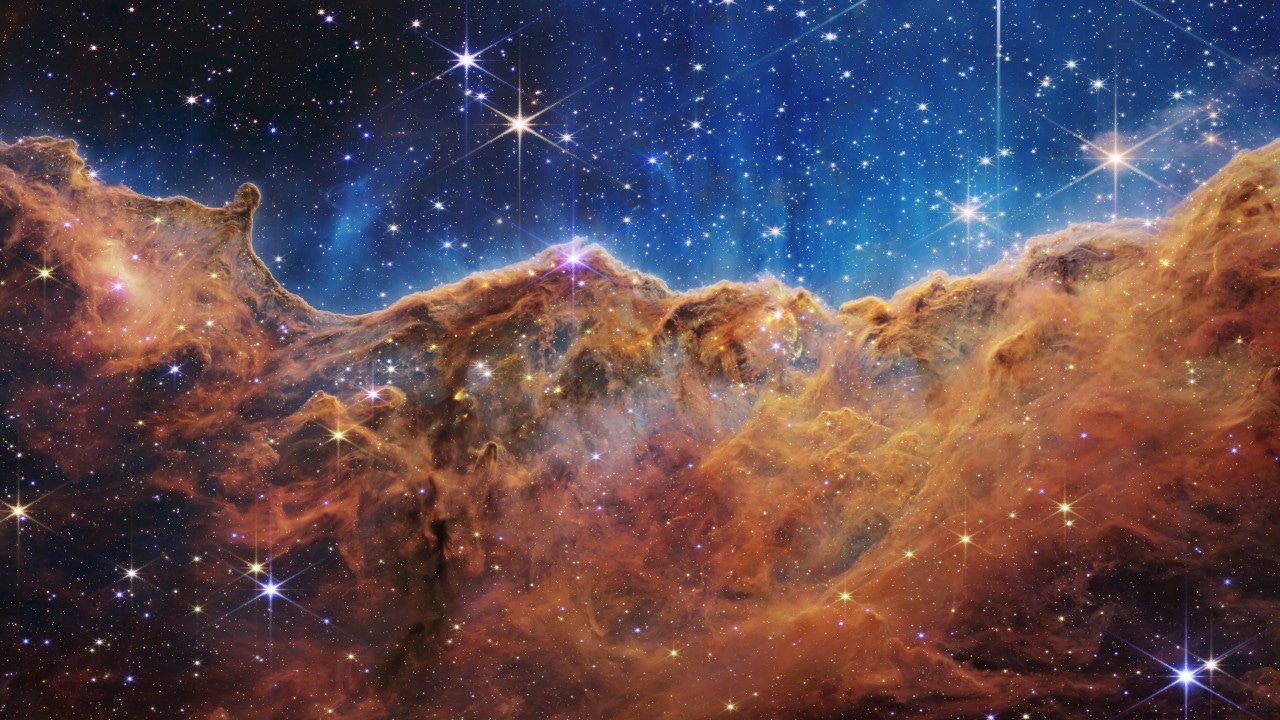U of M professor reflects on stunning new images from NASA telescope
New images captured by the James Webb Space Telescope are the sharpest pictures of the early universe that have ever been taken. The photos show the farthest humanity has ever seen in both time and distance.
The first image was released on Monday, followed by five more on Tuesday. The stunning views show a galaxy cluster as it appeared 4.6 billion years ago, the late stages of a star’s life, and never-before-seen details of this galaxy group, which will allow astronomers to observe how galaxies interact.
“We’ve got this new tool that allows us to explore where we’ve never been able to explore before,” said Evan Skillman, a professor at the University of Minnesota’s School of Physics and Astronomy.
“The Webb represents a whole new opportunity for whole new ideas,” Skillman said. “Things that haven’t been tried before. This is a huge engineering accomplishment because engineers solved a tremendous amount of problems to put this thing together to get these capabilities. It really is not just a little bit better in a certain way — they’ve opened up whole new windows.”
The telescope launched on Christmas Day last year. It has unprecedented sensitivity to infrared light and was designed to observe every phase of cosmic history, from our solar system to the most distant observable galaxies.

This image released by NASA on Tuesday, July 12, 2022, shows the edge of a nearby, young, star-forming region NGC 3324 in the Carina Nebula. Captured in infrared light by the Near-Infrared Camera (NIRCam) on the James Webb Space Telescope, this image reveals previously obscured areas of star birth, according to NASA. (NASA, ESA, CSA, and STScI via AP)
“The very first science image the Webb took after it was done calibrating was an image for our program,” Skillman said.
He’s involved with a program started by one of his former students, who is now a professor at the University of California Berkeley.
“The Webb wanted to identify programs that they could look at in the very first weeks and months of operation,” Skillman explained. “They wanted to do example science images in the first few weeks to make sure it was working.”
He expects they will see those images later this week as they’re released to the public. Skillman is also part of several programs that successfully secured observation time in the future.
NASA accepted proposals from researchers across the globe who wanted the opportunity to use the telescope to investigate various targets in space. After a competitive process, 286 proposals were selected.
“I’m scheduled to be receiving observations over the next 18 months as each program gets executed,” Skillman said. “We want to explore. We want to understand things better. This telescope built on a legacy of other space telescopes, of other ground-based telescopes that we’re exploring the heavens to get a better perspective on our place in the universe.”
He said the images already released have provided new insight into his own research.
“There was a spectrum shown of a galaxy … and my colleague pointed out one of the very faint emission lines, which I had used to determine the metal abundancies in other galaxies,” Skillman explained. “Now she was like, ‘Look, you can do this with galaxies as they’re being born.’ That was very exciting.”
Skillman believes the new capabilities of this telescope will help us better understand our own solar system as well.
“What we’ve come to appreciate is there’s things about our solar system that seem quite typical — planets seem to be around all of the stars,” he said. “But we also found there are different types of planets where there aren’t prototypes in our solar system. Studying the different types of planets reflects back on the theories of planet formation, so we may be able to understand how our planets came about.”